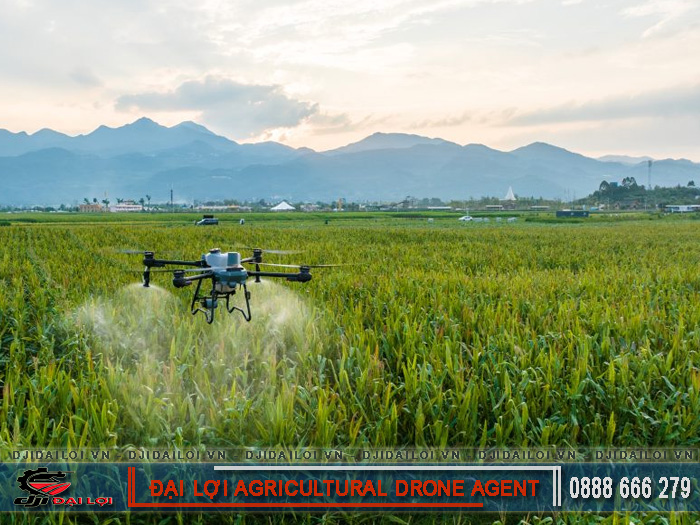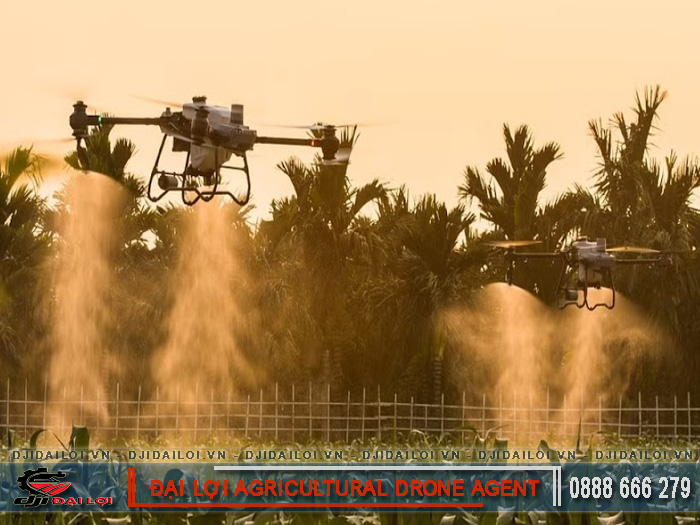
With agricultural labor becoming increasingly scarce, traditional spraying costs rising, and export residue limits tightening, flycam pesticide spraying has emerged as a promising technology. However, farmers and cooperatives still wonder whether it truly delivers the advertised results - reducing chemical use, increasing yield, cutting labor, and fitting Vietnamese conditions.
Vietnam is witnessing rural labor migration, a shortage of traditional sprayers, rising costs, and stricter chemical-use requirements. Meanwhile, crops are becoming more diverse (fruit trees, coffee, durian) and terrain more complex. Therefore, fast, uniform, and safe solutions like flycam pesticide spraying are increasingly considered.
UAV spray flycams have been deployed in many countries, promising reduced chemical use, better coverage, and faster spraying on large areas. Studies show UAVs can achieve coverage comparable to airplanes or helicopters in certain conditions. However, achieving those results in Vietnam’s smallholder farms - with varied terrain, operation, and cost factors - requires careful evaluation. That’s why users ask: “Is flycam pesticide spraying truly effective in practice?”
Before deciding to adopt or invest in flycam spraying, farmers and agribusinesses should clearly understand the main performance criteria. Below are the most important expert-recommended factors:
One key determinant of flycam spraying effectiveness is how evenly droplets cover crops, especially on tall or uneven terrain. The study Improving agricultural spraying with multi rotor flycams found that factors such as flight height, nozzle spacing, and spray pressure significantly affect uniformity. If the flycam flies too high, wind drift may cause droplets to fall outside the target area, reducing effectiveness.
Another key question: does flycam spraying actually save chemicals, time, and labor compared to traditional methods? A PLOS One study found flycams significantly reduce chemical use and energy consumption. The University of Missouri also estimated that flycam operating costs are lower when spraying over large areas.
Investment cost, operational expenses, and ROI are crucial. Flycams, spray systems, operator training, and maintenance all add up. For small areas or infrequent spraying, the economics may not work out. Cost studies show ownership only becomes profitable when the sprayed area is sufficiently large.
→ Scientifically, flycam pesticide spraying has strong theoretical support.
Thus, flycam pesticide spraying is indeed effective - but only when favorable conditions are met.

According to the University of Missouri, flycam spraying costs about $3.37 per acre (~8.3 million VND/ha) at scale, but ownership costs are high for small areas. For smallholders, investment payback is often challenging.
You should calculate: flycam purchase cost, replacement batteries, maintenance, operator cost, flight hours per year, and spray frequency. The higher the monthly sprayed hectares, the lower the cost per hectare - only then does it become economically viable.
Flycam pesticide spraying involves not only aviation but also chemical safety and environmental compliance. For example, in Europe, countries like France have approved flycams for “low-risk” chemicals on sloped terrain. In Vietnam, operators must be trained and comply with UAV flight and pesticide regulations.
Flight plans must avoid obstacles, power lines, and residential areas, while monitoring wind and dosage. Noncompliance may cause overspray, drift, or hazards.
Research shows flight height, nozzle spacing, and spray pressure greatly affect coverage efficiency. When conducting flycam spraying, you should:
Based on these analyses, flycam pesticide spraying offers clear advantages - especially when applied under proper conditions: large-scale areas, skilled operators, favorable environments, and standardized procedures. However, misapplication or unsuitable conditions may reduce both technical and economic efficiency. Farmers should carefully assess scale, cost, and model suitability - and consider hiring flycam spraying services before large investments.
If you’d like, I can also help compare agricultural flycam models in Vietnam (price, features, ROI) for reference.
Not recommended. Night spraying with flycams carries high risks due to limited visibility, poor wind control, and difficulty identifying target areas.
Yes. Many modern flycams support spraying foliar fertilizers and micronutrients, especially for fruit trees, providing uniform nutrient coverage and saving time.
Regular maintenance is required - checking batteries, nozzles, filters, and control systems. Without proper upkeep, spraying performance drops significantly.
Absolutely. For tall crops like durian, jackfruit, or mango, flycams ensure even canopy coverage, reduce time, and eliminate ladder-climbing risks.
Yes, if the area is large enough. Flycam spraying improves speed and uniformity for rice and vegetables, but specialized models should be used to avoid crop damage or spray drift.